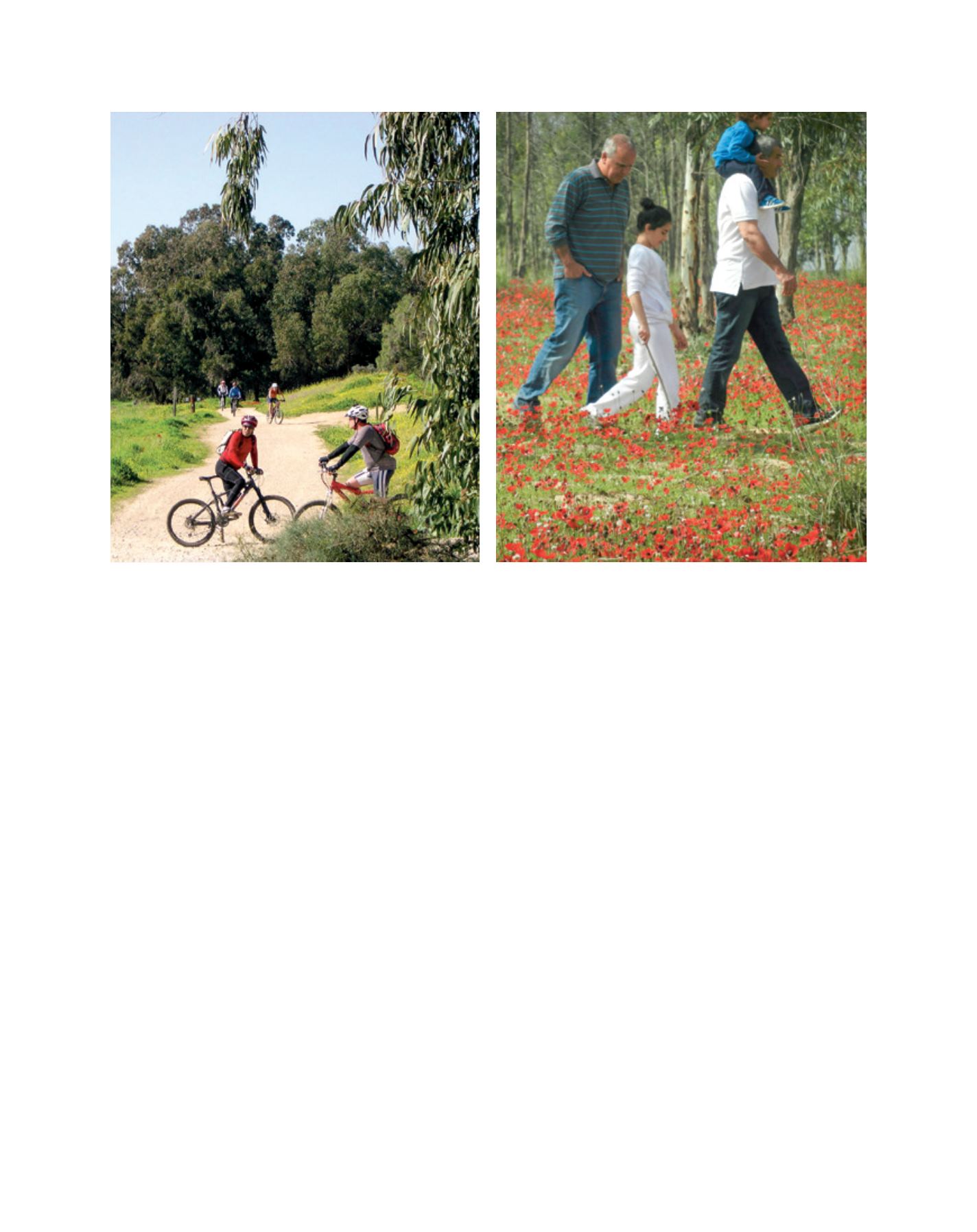

[
] 91
highly functional and sustainable ecosystem. The integ-
rity of the ecosystem is restored because the following key
processes are regulated by management:
• redistribution of on-site rainfall through changes to
surface run-off harvesting patterns
• enhancement of natural soil patches and the creation of
artificial ones which capture and retain surface run-off,
thus functioning as localized resource sinks.
These patches, enriched with water and soil resources, exhibit
increases in primary productivity.
In sum, the aforementioned approach towards system
rehabilitation to restore landscape heterogeneity involves
the creation of artificial sinks on slopes and valleys, which
collect and store run-off rainwater, thus producing patches
enriched with water and nutrients. The infiltration of
captured surface run-off into the soil creates water-rich
microhabitats and improved soil quality, enabling the
possibility to plant trees to create a novel ecosystem. The
human-made novel ecosystem reinforces the system’s
ability to supply benefits to humans and other organisms
living there. The choice of which tree species to plant and
the configuration of the planting are adapted to landscape
and soil moisture spatial heterogeneity, soil, site-specific
topographic, and edaphic factors. The use of a diverse set
of tree species guarantees resilience and durability of the
novel ecosystems to the stresses of drought, grazing and
human activity.
The historic long-lasting, widespread and large-scale
human land use in the Northern Negev has result in a
land surface which can be considered a mosaic of cultural
landscapes, in which different stages of anthropogenic
influences have been overlaid and refined, resulting in
alternating periods in which desertification and of reha-
bilitation prevail. Therefore, the mosaic of ecosystems
that form the cultural landscapes can be understood as
the result of the dynamics of social-ecological systems, in
which social, economic and environmental components are
closely interwoven.
Cultural landscapes imply landscapes that are deliberately
managed by humans and that their ecosystem services have
been sustained through a long and complex history of human
settlement, land use and misuse.
KKL-JNF adopted a cultural landscape framework that
provides a new perspective on desertification and reha-
bilitation as interactions between man and nature, by
understanding of the role of humans in landscapes and
ecosystems transformation in the Northern Negev. In this
view, landscape management means integrating natural
processes and human engineering in a functional way,
as described in the previous section, in order to provide
ecosystem services. Functional rehabilitation is therefore a
comprehensive framework that connects the cultural land-
scape with its ecosystem services.
Through its years of varied activities, KKL-JNF has found
that integrating cultural landscape and ecosystem services
approaches is a powerful tool in order to guide manage-
ment activities of functional rehabilitation, such as water
redistribution in a specific landscape unit. The ability to
display ecosystem services for different land use within a
Bicycle trails, native flowering sites, parks and community forests are just some of the cultural services which improve the life quality of inhabitants
Images: Itshack Moshe
L
iving
L
and
















